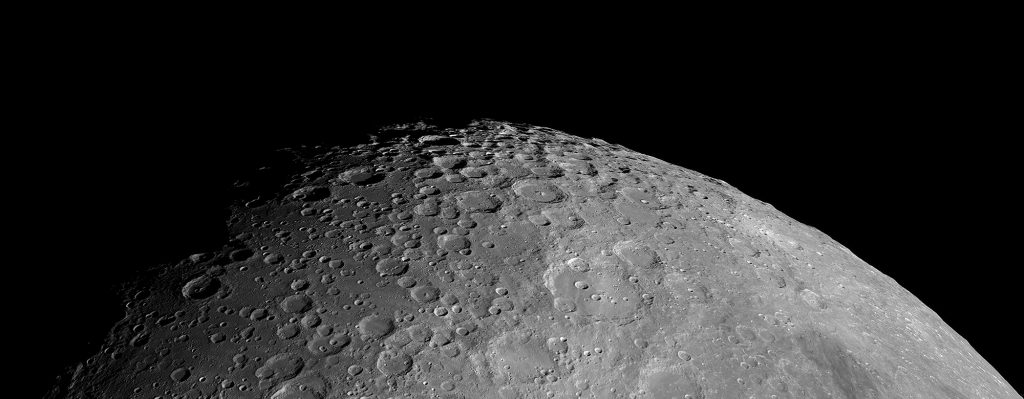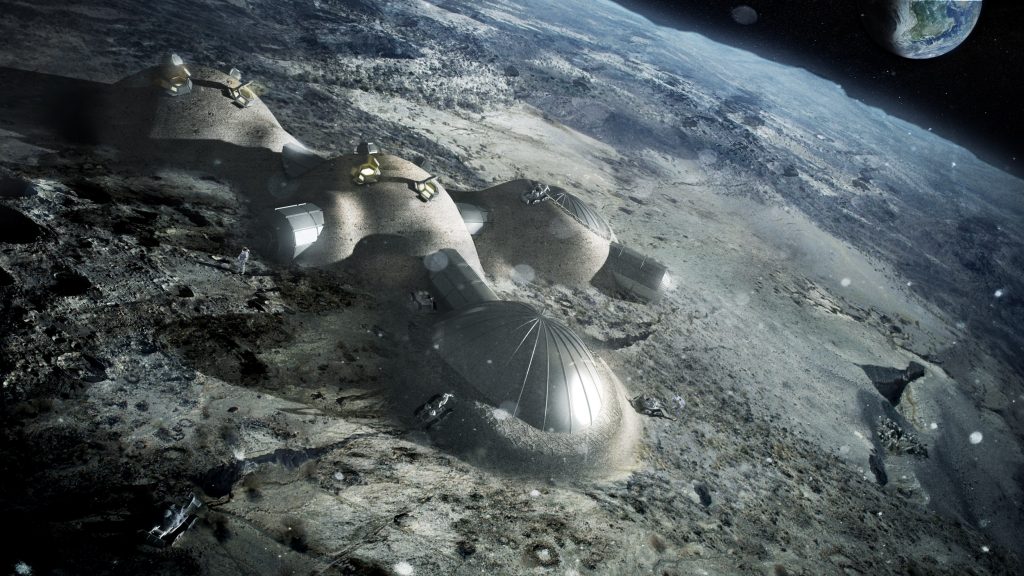From the earliest astronomy to the space race, humankind has witnessed a constant evolution in the exploration and use of space. Now, with the International Space Station (ISS), an unparalleled level of cooperation has been achieved which has continued largely unaffected by any crises that may be occurring on Earth: many nations all pulling together, demonstrating day in, day out, just how important it is to invest in research and technology.

The paradigm shift that we see today in space activities is best encapsulated by the term ‘Space 4.0’, and the ‘Moon Village’ concept seeks to transform this paradigm shift into a set of concrete actions and create an environment where both international cooperation and the commercialisation of space can thrive.
The Moon Village concept was developed through a process of thorough analysis but it is vital to understand that what we are describing is neither a project nor a programme. By ‘Moon Village’ we do not mean a development planned around houses, some shops and a community centre. Rather, the term ‘village’ in this context refers this: a community created when groups join forces without first sorting out every detail, instead simply coming together with a view to sharing interests and capabilities.
The Moon Village is open to any and all interested parties and nations. There are no stipulations as to the form their participation might take: robotic and astronaut activities are equally sought after. You might see not only scientific and technological activities, but also activities based on exploiting resources or even tourism. It is precisely the open nature of the concept that would allow many nationalities to go to the Moon and take part while leaving behind them on Earth any differences of opinion.
From a scientific perspective, the Moon is truly fascinating, firstly as an archive of Earth’s early history, but also because you could site a radio telescope on the far side of the Moon and stare deep into the Universe without any interference from human made signals. For future space missions, you could develop and test methods based on new technologies, such as additive manufacturing, that could potentially make use of locally available resources.
Moon Village is not a single project, nor a fixed plan with a defined time table. It’s a vision for an open architecture and an international community initiative.
It is clear that in the future, humans will take part in crewed flights farther into the Solar System, so the Moon Village could also act as the perfect springboard and testing ground with that objective in mind.

The Moon Village concept has the potential, by providing fascination and inspiration in equal measure, to awaken renewed interest in STEM subjects, with benefits being felt well beyond the world of space. Now we must bring interested parties together so as to achieve at least some degree of coordination and exploitation of potential synergies.

Discussion: 7 comments
When will we see the first concrete missions inside this new visions?
Dear Jerome,
difficult to say, as it is still a concept and a vision.
But what we definitely can say is that we already have quite an extensive list of interested parties, both from the public and private sectors.
M. Trovatello, ESA Communication Department
Thank you Jan Woener for leading the Moon Village vision. To me it’s clear that the Moon Village is not a traditional space program. It is a paradigm shift in the way we design and govern international space exploration projects, by integrating from the very beginning the perspectives and interests of all the different stakeholders: and by all I don’t mean only the established space powers, but also emerging space nations and developing countries. Government, AND the private sector. Science, engineering AND arts. The Moon Village can create an innovation platform and research network for the 21st century – a new way of thinking and doing that breaks down the barriers dividing the disciplines and nations. Moreover, the Moon Village governance might create powerful innovations useful back on Earth. What if we approach the Moon Village as a way of experimenting with and prototyping international collaboration methods, consensus building, finance, and creativity? Triggering new partnerships and developing capabilities that create new opportunities for addressing global challenges?
At a moment in history that’s likely to be remembered for its alarming divisiveness, the space community has the unique opportunity to coordinate efforts to create a powerful symbol of unity – a partnership wider and stronger than the ISS – promoting cultural inclusivity. The Moon Village could be a potential turning point, representing us all united as human species. A tabula rasa for our civilization.
Well, said!
And kudos to Jan Wörner for the energy he demonstrates when arguing for the Moon Village. In this matter it feels he is going above and beyond Director-Generals normally do.
According to latest news, the ISS is set to run until 2028. Since it uses ~16% of NASA’s yearly budget to maintain (+budgets of other agencies), is it realistic to see such a village funded any time before the 2030’s?
16% of the US budget yearly seems like an obscenely gross over estimation. The US in 2017 had a GDP of 18.5 Trillion while the entire ISS program since its conception has been estimated to have cost less than 150 billion (not just of US money but all the world’s agencies who contributed to the space station). NASA itself gets let’s than 0.5% of the US annual budget.
The 16% figure you quote is closer (in principle or order of magnitude) to the percentage of money NASA spent on the ISS of its own budget : Operation cost is less than 2bn a year, while NASA’s budget in 2017 was about 19bn.
The Moon Village is a fantastic idea. One day we’re going to Mars and the moon is a very nice “practice ground”, but a super exciting adventure in itself. Questions of how to do it are more important than why should we do it because that’s what exploration is about. We’re not wise enough to understand the pros and cons of each and every idea we have unless we do it.
What’s the probability of meteor damage – re size of the installation ‘targets’ shown in the blog-pic above, the strength of their regolith encasement, etc.?